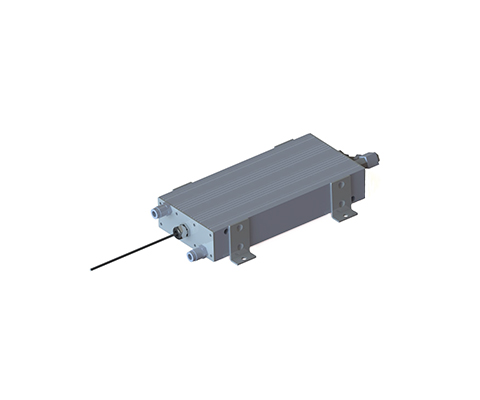EV power specialist REO UK has recently supplied water-cooled braking resistors in an electric vehicle (EV) designed for arduous environments. The BWD 158 standard range of braking resistors converts traditional diesel-powered internal combustion engine (ICE) vehicles into electric and utilises water-cooled resistors into the braking system. The new offering complements the REOHM range of inverters designed according to the latest modern technology that respond to the different needs of engineers.
The BWD 158 standard range, which is rated for continuous power of up to 5000 W, was chosen due to its high overload capacity — up to 33 kW — and its low surface temperature, which can be lower than the ambient temperature in certain applications.
EVs lend themselves to operation in areas where low surface temperatures are required, such as ATEX environments. In these settings, EVs are often favoured over ICE vehicles as a means of minimising the risk of explosion.
“At REO, we believe that not all braking resistors are the same,” explained Steve Hughes, managing director of REO UK. “In harsh environments, it is important to choose a braking resistor that has a better dynamic behaviour and effective heat dissipation.
“REO’s indirect cooling system ensures that the coolant and power remain totally isolated, but as a separate safety feature, the resistors can provide continuous operation for a period of time without coolant flow. During this time, an internal thermal switch can be used to enact a safe and controlled shutdown of the system.”
Several factors can influence the optimal placement of the thermal switch, such as potential overload conditions, mounting and ambient considerations. REO engineers can use accurate modelling to determine the best mounting place and temperature of the thermal switch. In addition, the resistor would sit near the EV operator and so unwanted cabin heating would certainly not be an issue.
An additional benefit is that the encased construction of the water-cooled resistor means that it runs virtually inaudibly, unlike conventional resistors, which can emit audible noise at harmonic frequencies of the DC ripple current. This can cause problems in areas where they are in close proximity to people and personnel.
“We are always up to date with the latest requirements in place and the low surface temperature of our products combined with the high IP65 rating allows them to be used in certain ATEX environments” continued Steve. “Operational safety and application efficiency are our main priorities, which leads us to always research and develop our offerings.”
A further benefit of the highly efficient cooling system is that it allows the resistors to work in close proximity to other components and also allows the resistors themselves to be approximately 80 per cent smaller than conventional resistors. The BWD 158 series have a very compact construction and are particularly robust to protect against dust, liquids and slurries.
To find out more about REO UK’s range of braking resistors and other products for EVs, visit the company website.



